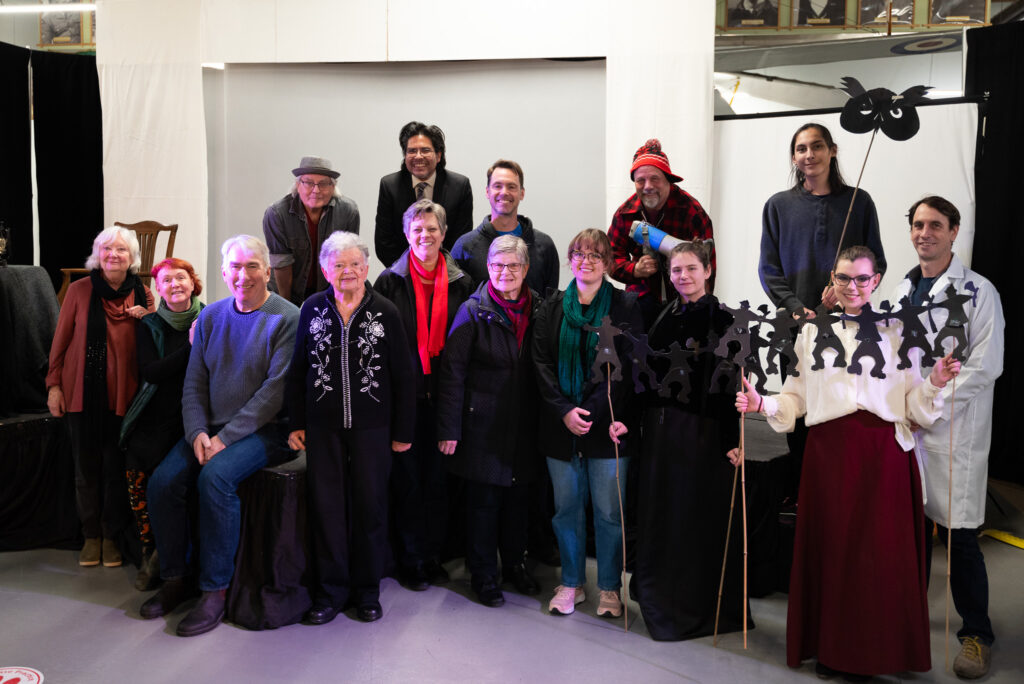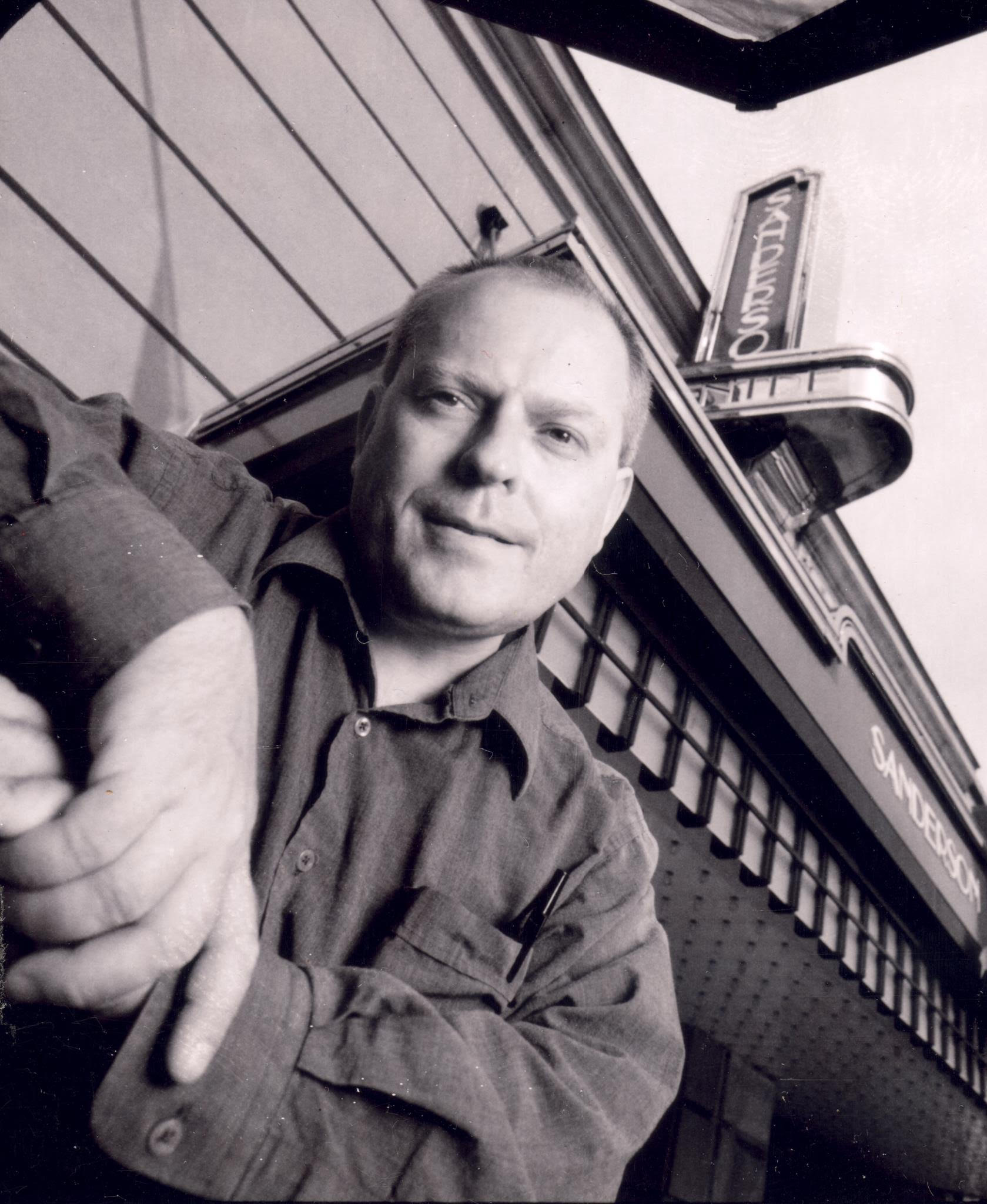Since high school, Peter Muir has dedicated his life’s work to the world of theatre.
Born in Orangeville and raised in Brampton, the now Brantford resident has immersed himself in the role of telling the city’s stories and nurturing its culture as the Artistic Director of Brant Theatre Workshops.
When Muir left high school, he knew it was time to go out on his own and jump feet first into the world of theatre in order to expand his knowledge.
“I was interested in theatre from an early age and so I packed up my bags and moved to Toronto where I lived for about 15 years,” he said. “It was there that I had the opportunity to start studying with the many theatre artists that I happened to like at the time, which was actually in and around the time of alternate theatre.”
The actor describes alternate theatre as a way of thinking out of the box.
“It’s kind of working outside of the standard canon,” he said. “It’s searching for new ways to present ideas and affect people. It really came from downtown Toronto, at a time when there was only one big professional theatre and it did that standard canon type of show.”
Living on Queen Street West, he began working in some of the city’s most iconic theatre spaces including Factory Theatre, Toronto Free Theatre, Theatre Passe Muraille and more.
At the same time, he attended several university classes where he continued to be inspired to create Canadian theatre works.
“I was interested in certain classes and so I would go to them, but I never graduated or got a piece of paper because I just went to the people I wanted to work with, and they’d often just let me monitor the class. We studied all the playwrights from Britain and such, and there was really only one playwright that we studied that was Canadian,” he said. “It was very much like ‘wait a second, somethings not right here.’ So that’s where the desire for alternate theatre came from, it was that lack of the voice of Canada. It was a very exciting time in Toronto and I made a lot of friends who I still work with now and most of my training was done working in alternate theatre.”
Throughout his many years in Toronto, he began to thrive and grow as not only an actor, but as a director and stage manager, garnering both a Genie Award and Dora Mavor Moore Award.
As he continued to work in the industry, his list of contacts continued to grow.
“I worked with Ken Gass at Factory Theatre for years, as well as Ernie Schwartz at Studio Lab, and it was there that I learned from a lot of different kinds of people,” he said. “Following that, I kind of attracted the attention of some people and I ended up working with Martha Henry at the Grand Theatre in London, Ontario, for a while. I did three different projects there because what I do is kind of site-specific work.”
His time in London proved fruitful and he continued to push the boundaries of what it meant to be in theatre.
“When I was in London, I did a show in a deserted shopping mall with a local community group because it was this depressed kind of area,” he said. “Then we did another out in a park there, and I also did “Robin Hood in Sherwood Forest” as well. There’s actually a Sherwood Forest there, so we took the audience through that forest, which is right beside the Museum of Ontario Archaeology. Then after that, my friend Simon Johnston from Lighthouse Theatre came to see my work, and he asked me to be an Associate Director with them. I was in that role for about four or five years.”

As the years continued, he took on several other roles including teaching at George Brown College, later he was the Editor of Brant News, and at the same as that, was the Artistic Director for Theatre Brantford.
With them, Muir directed an impressive number of shows at the now unionized Sanderson Centre, but says his interest truly lies in telling the stories of Brantford with Brant Theatre Workshops.
“It’s now all Brantford work. It’s created in Brantford and in Six Nations of the Grand River, and you know, it can be a challenge, but it’s the work that I do,” he said. “Brantford really needs culture, but what it gets is kind of those standard road shows that go in and out of Sanderson. So, the last little while, my life has become dedicated to just bringing culture, and the acceptance of culture into Brantford because it’s a little concerning to me when I see what’s offered here as culture, you know? You have to get outside of the box.”
Now, Muir spends his days looking to connect different cultures.
“You can have conferences about how to bring together two communities all you want, but unless they work together, it’s been proven that it’s totally ineffective. That’s where “Contact Theory” comes in because the most effective way to learn is to go in there and learn from, and work with those different people,” he said. “It was so obvious to me that it worked when I started working with the Indigenous community. There’s so much that we don’t know and unless you’re in it and collaborating alongside them, you will always miss things. This ensures that we don’t misappropriate anyone’s culture.”
When it comes to working with the Indigenous community, he said it’s taken time to establish that connection, but that it brings him great joy.
“Gary Farmer, who I worked with on a play called “Blue City Slammers”, we reconnected about five or six years ago, and I was interested in working with the Indigenous community and the idea of Truth and Reconciliation,” he said. “So, I called Gary and he invited me to a studio behind Thru the RedDoor on Six Nations, and he was working on a project with all these young actors who weren’t trained but were people from the community and interested in acting. Since then, I’ve just been working with those same people and it’s been a really great thing over the past five years.”
He says that the experience has been a privilege.
“For me, being accepted by that Indigenous community, and having them allow me to help them tell their stories, that’s a big honour for me,” he said.
Not only does he work to connect with members of the Indigenous community, but with other communities as well.
“One of our major annual projects at Brant Theatre Workshops is the “Memories Project.” There’s a group of us and we decide on a community that we want to focus on each year,” he said. “We started out with the Jewish community here and we thought it was a one-off thing where we do a play about the Jewish community, a historical display alongside it and then have some Jewish food afterwards and it attracted around 300 people so we were onto something,” he said.
Since then, they’ve done the same thing with the Italian community, Chinese community and this year, they will be working with the Armenian community as well.
“It’s just really become a neat way of working with certain communities in theatre,” he said. “The main reason for our work in it is to reduce prejudice and I’m a great believer in the work of that ‘Contact Theory.’”
He said that Brant Theatre Workshops strives to create a comfortable workspace for all.
“We have such a collective of actors and our rule is, ‘if you don’t feel comfortable saying or doing something, you don’t have to. If you feel uncomfortable with any statement we’re saying, we’ll change it,’” he said. “It’s been a good experience that way and I find it can give a perspective on a person’s history or their emotional state, and sometimes, that leads to change, which is really great. It’s transformative.”
Most recently, Muir has been working alongside those that have similar views about community storytelling.
“I’ve been working with the Grandview Theatre and I’ve been working with some really top of the line professionals and I’m quite enjoying it,” he said. “Most recently, I’ve been working with their Artistic Director, Peter Smith, who has worked throughout Canada, as well as Patricia Flood, a Designer from Stratford, and Cathy Nosaty, a Musical Director for Canadian Stage and other large companies. So, it’s really neat and we all kind of have the same attitude toward working with the community.
The group is currently working to create a traveling show that will work its way from the mouth of the Grand River and all the way down to Lake Erie, which is set to take place in 2025.
“I had heard Smith was doing some stuff and I read online that he was doing this, and I figured I would call and find out what’s happening and we started talking. It was such a wild idea and I really liked it so I said okay,” he said. “It’s just the kind of thing I like to do and it’s such a challenge, and the idea of involving all these different communities all along the Grand is wonderful. We most recently did a Grand Winter, and then we’re going to keep adding pieces for every season and then next year, we’re going to piece it together and figure out what the whole story is.”
He said if there’s anyone interested in learning more about his projects or getting involved, he would be more than happy to chat and get them involved.
“We’re open to working with anyone and so if you want to do theatre, all you have to do is get in touch with us and we’ll make sure you’re on stage or even backstage,” he said. “Anyone can come and work with us, you don’t have to pass a mark or anything”
Reflecting on his overall journey, Muir said that when he looks back, he knows he is exactly where he’s supposed to be.
“I thought I was going to go to Stratford and Shaw and be a big deal, but you know, you often end up in a place you never thought you would and I feel like Brantford needs me,” he said. “I’m sure there are people who wouldn’t think that, but as an artist, I know this is where I’m supposed to be.”
Kimberly De Jong’s reporting is funded by the Canadian government through its Local Journalism Initiative.The funding allows her to report rural and agricultural stories from Blandford-Blenheim and Brant County. Reach her at kimberly.dejong@brantbeacon.ca.
